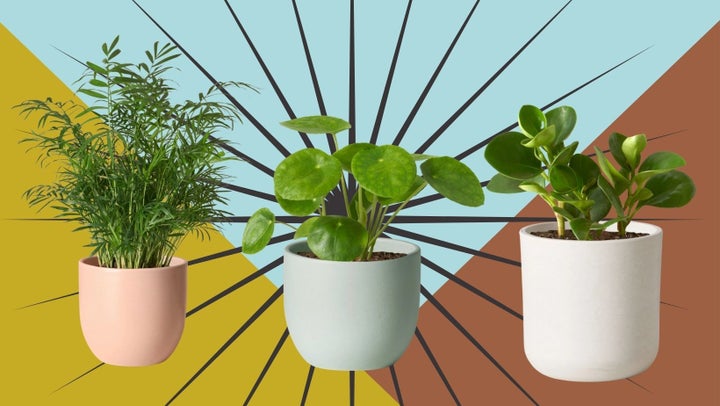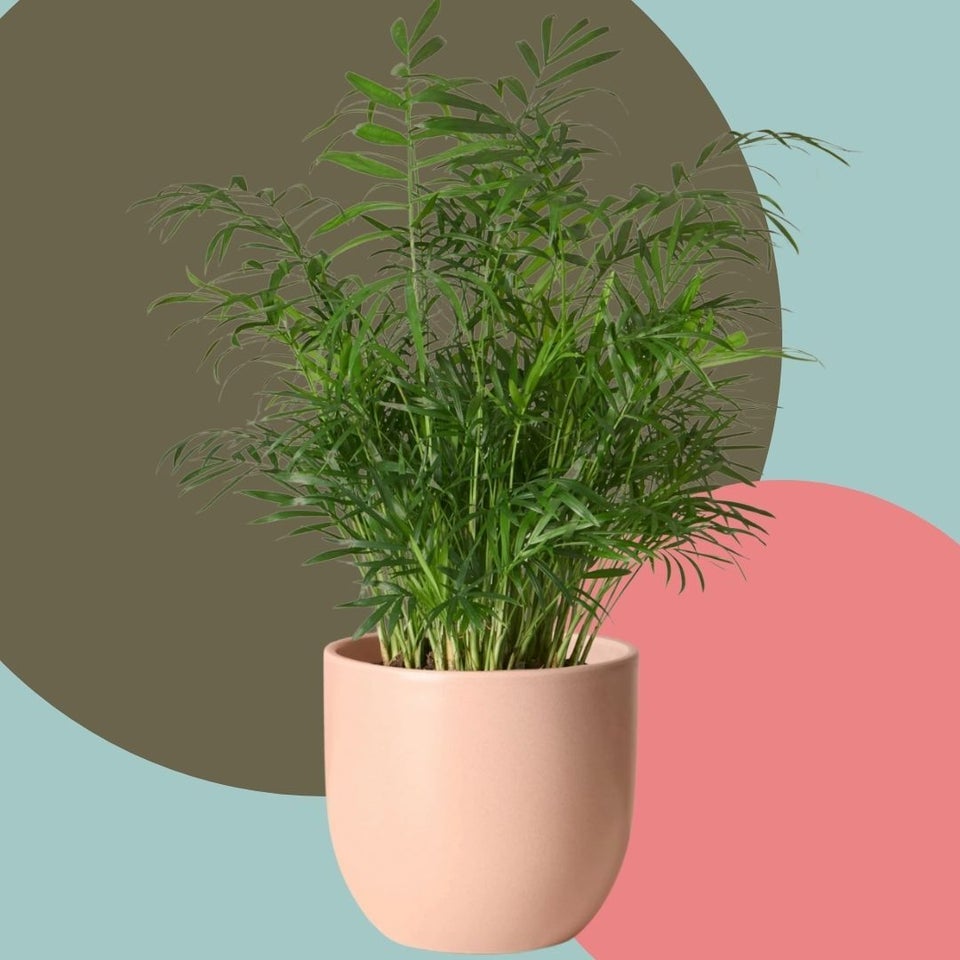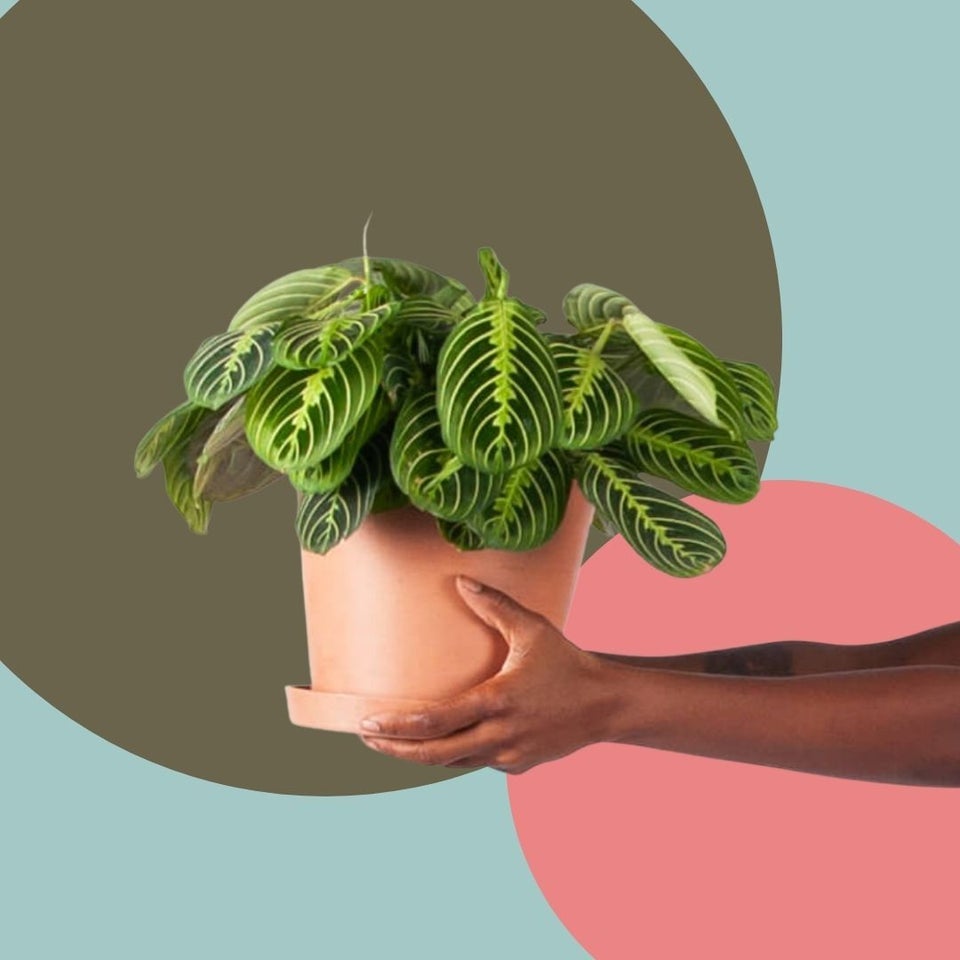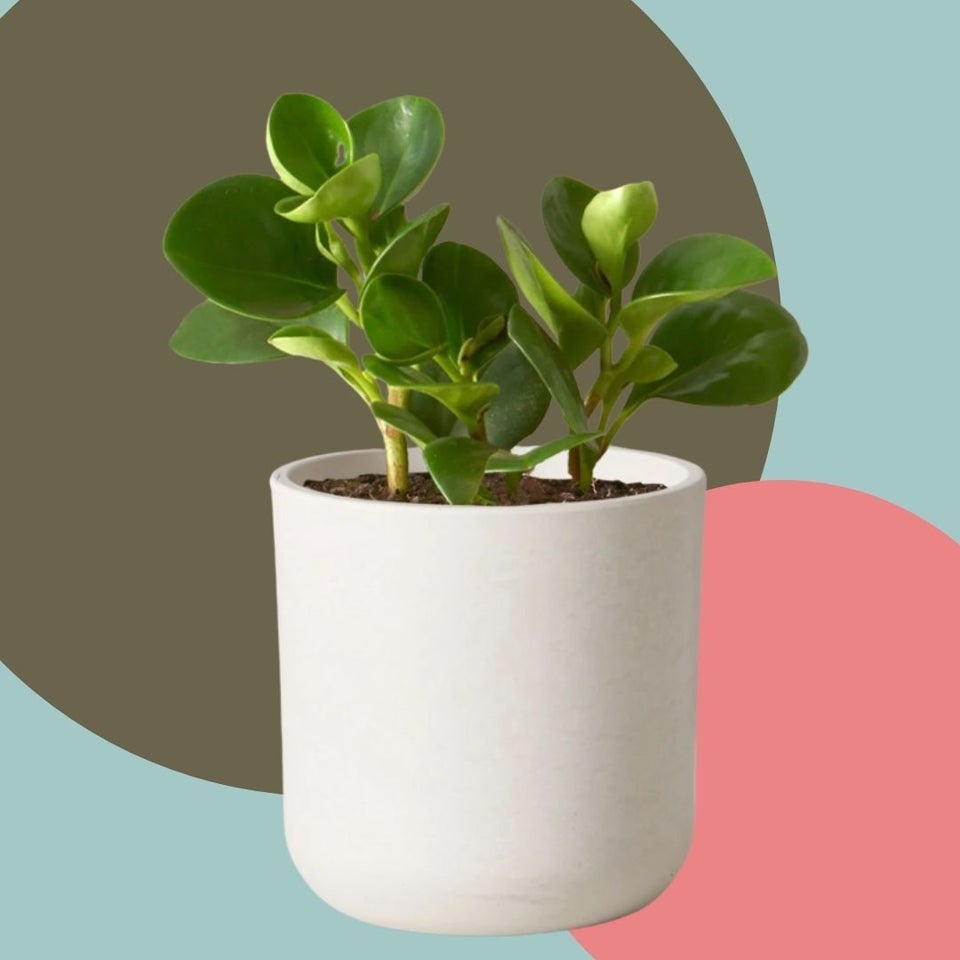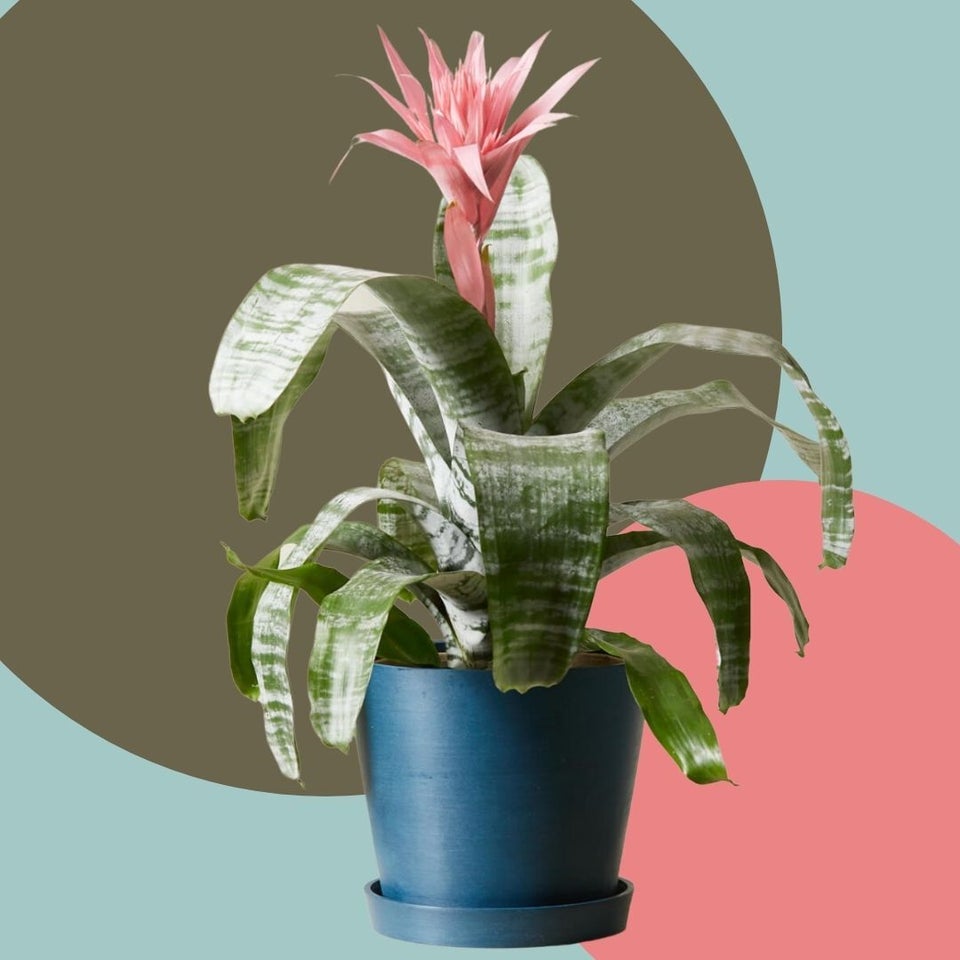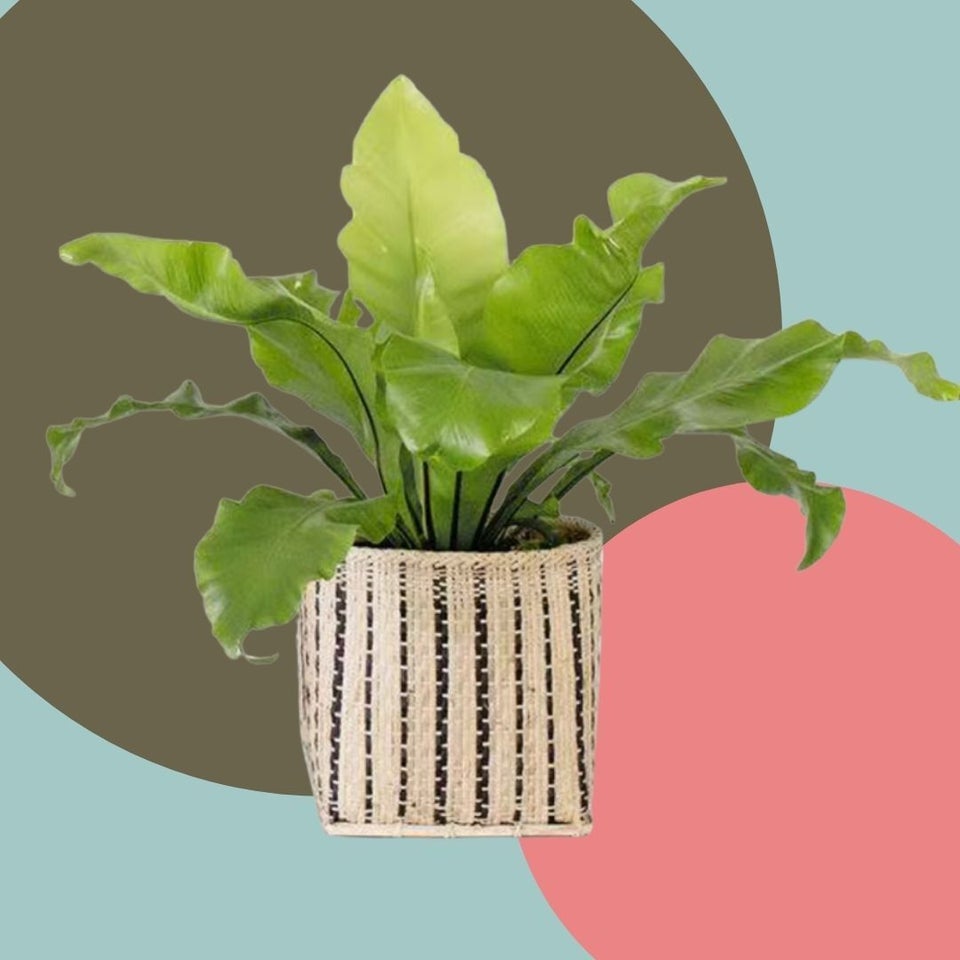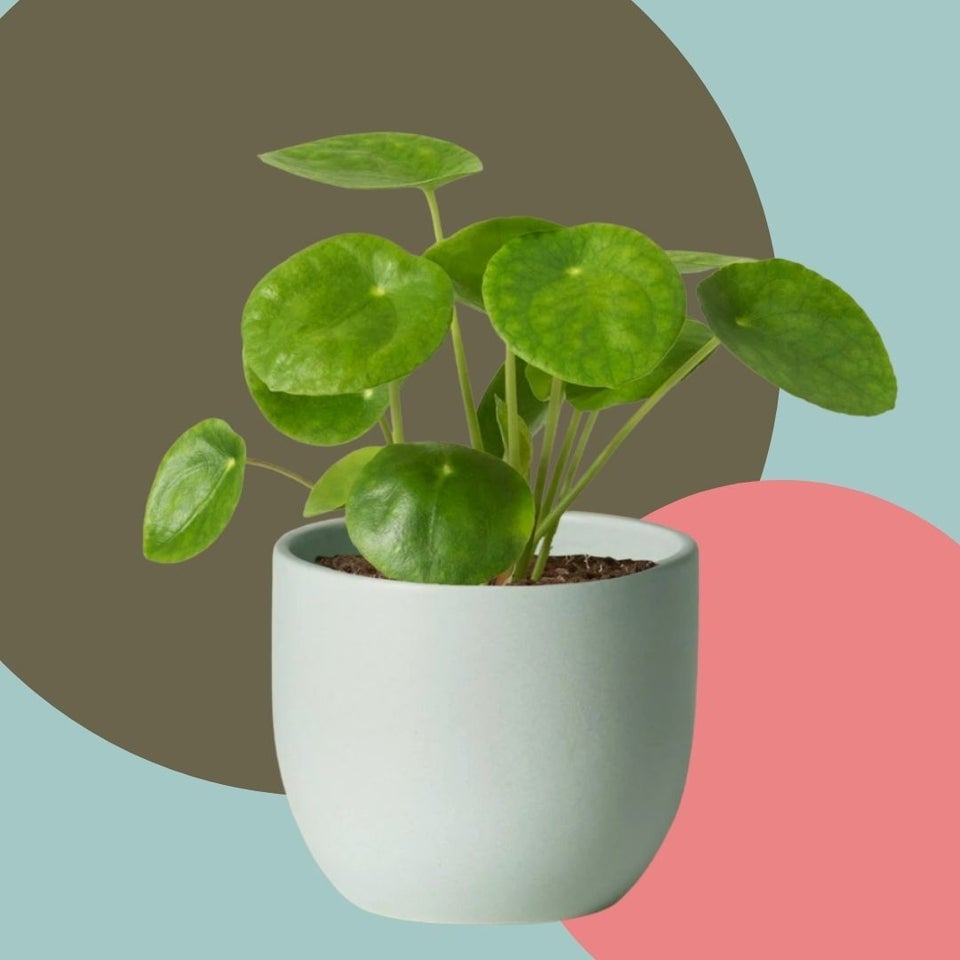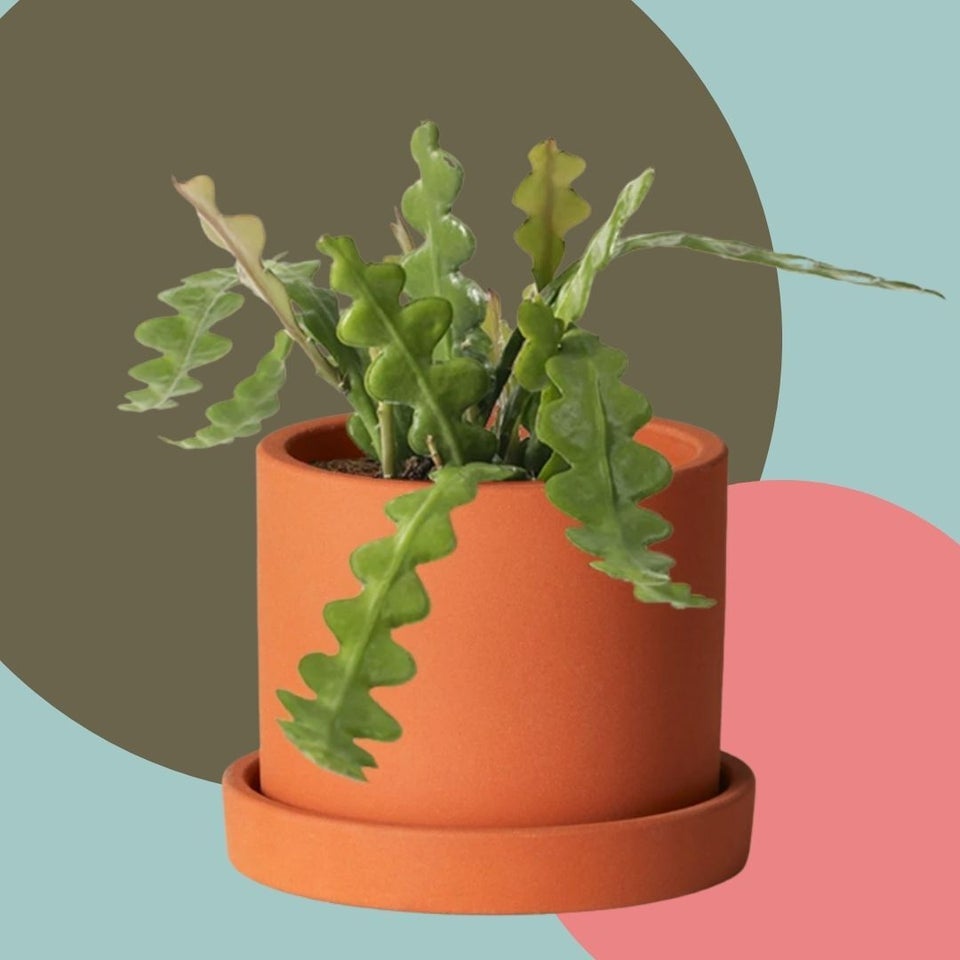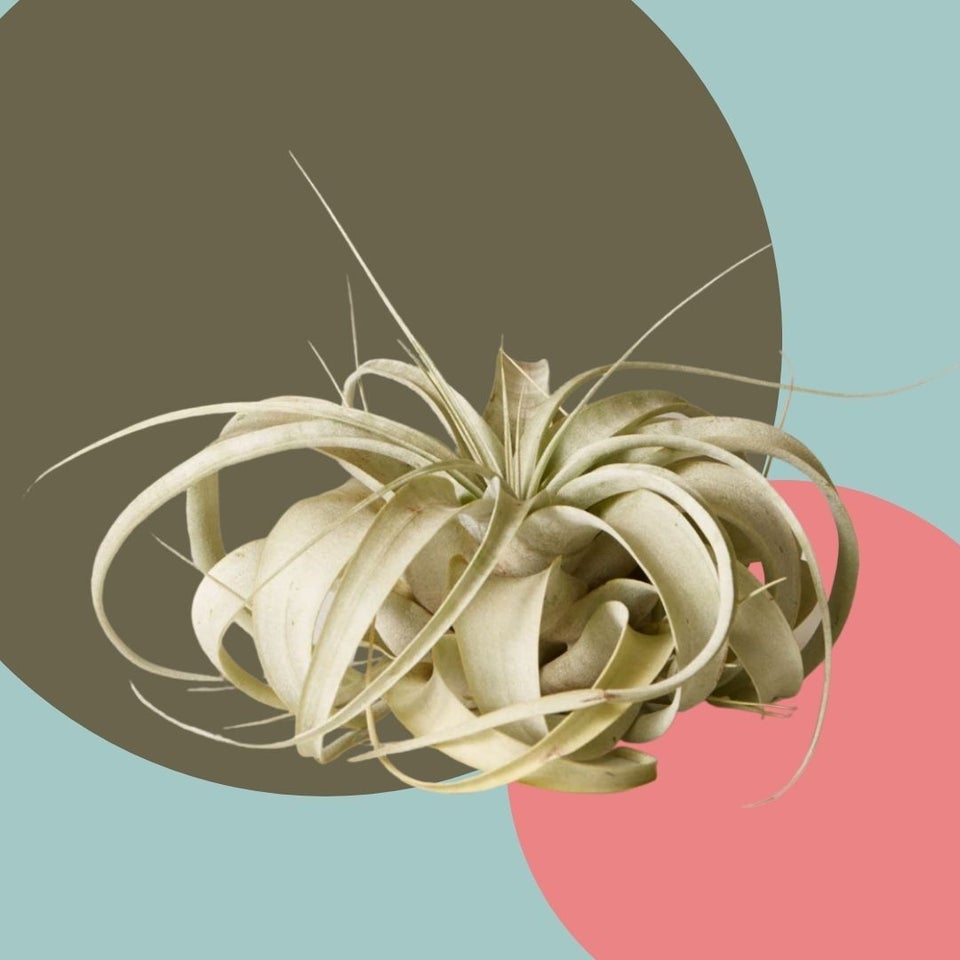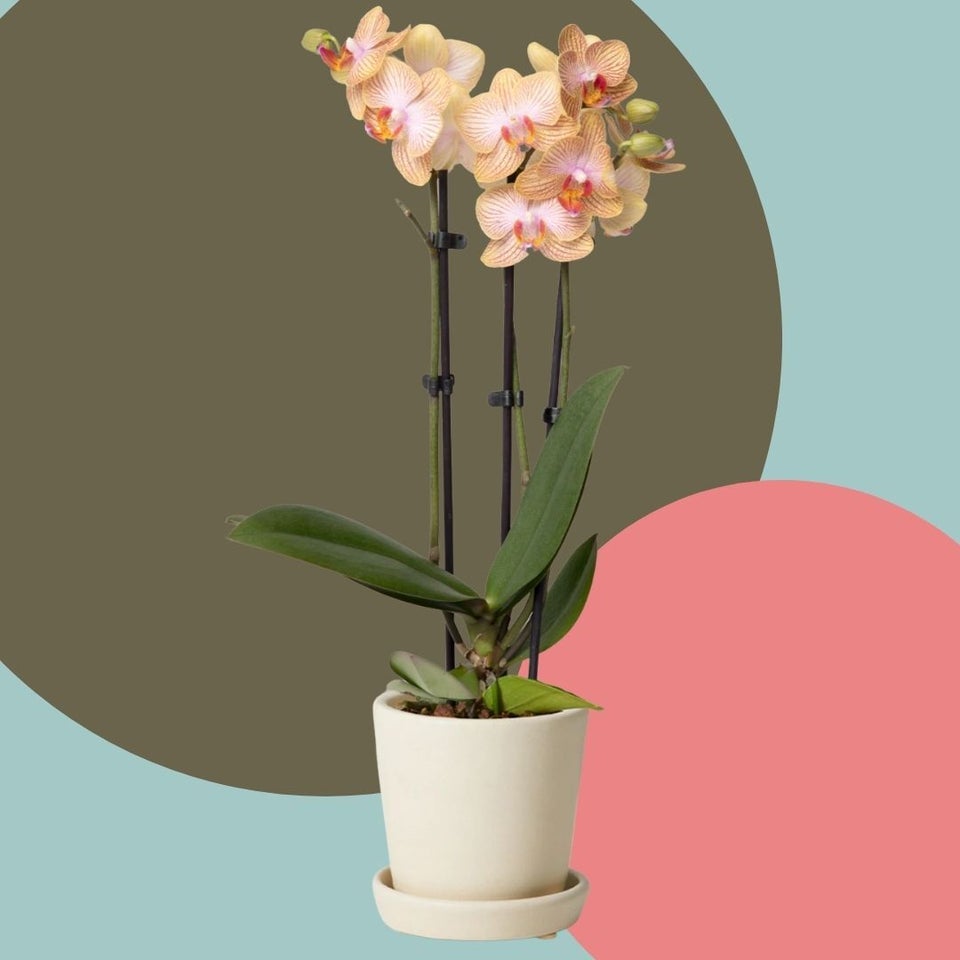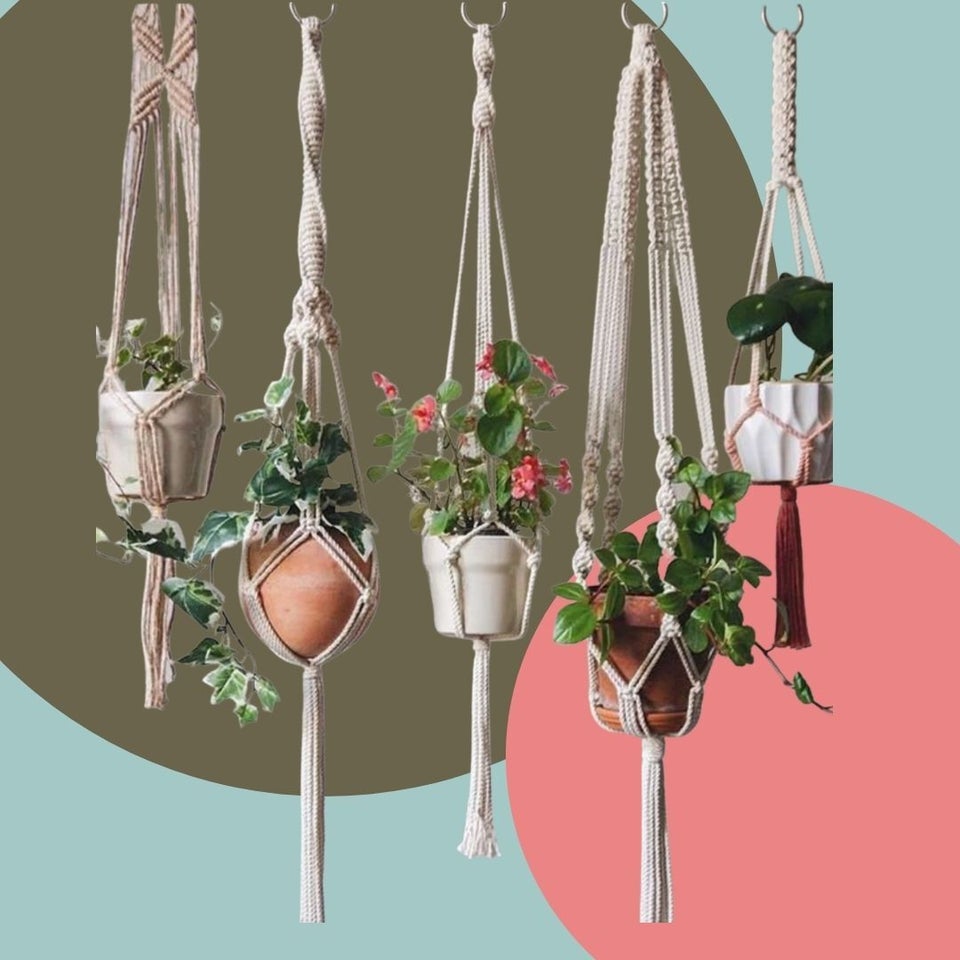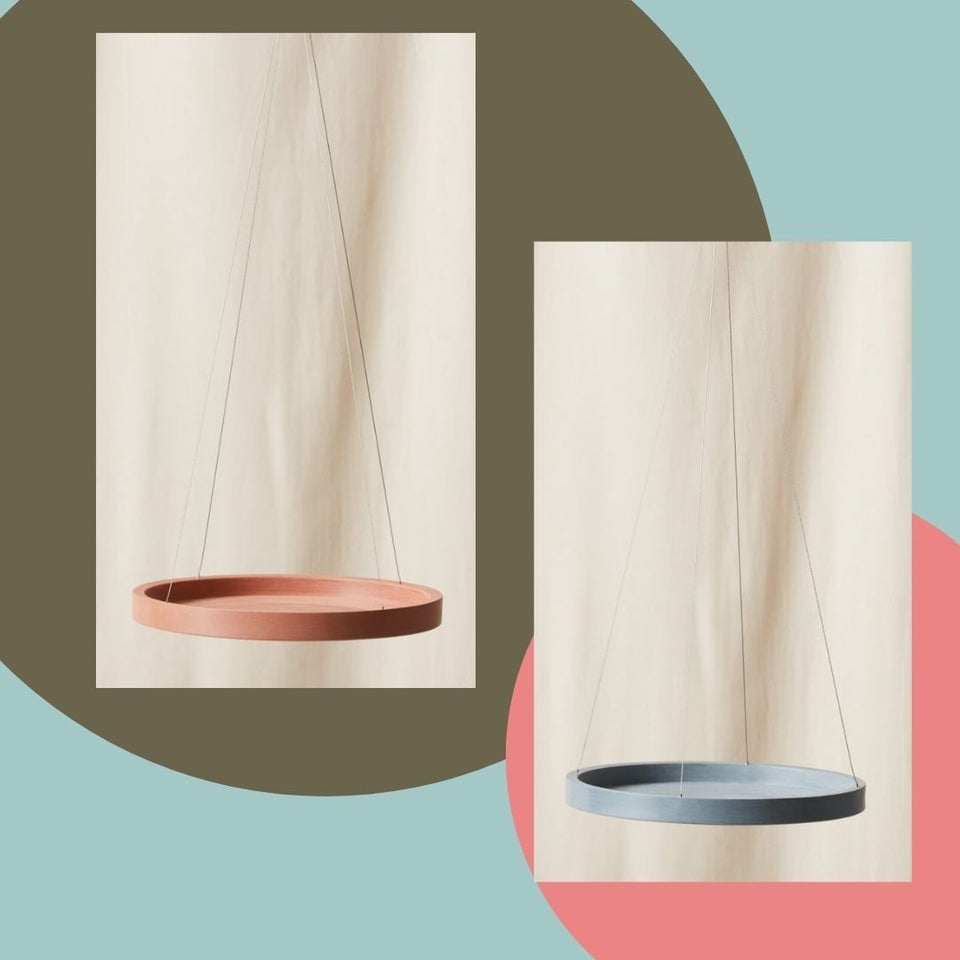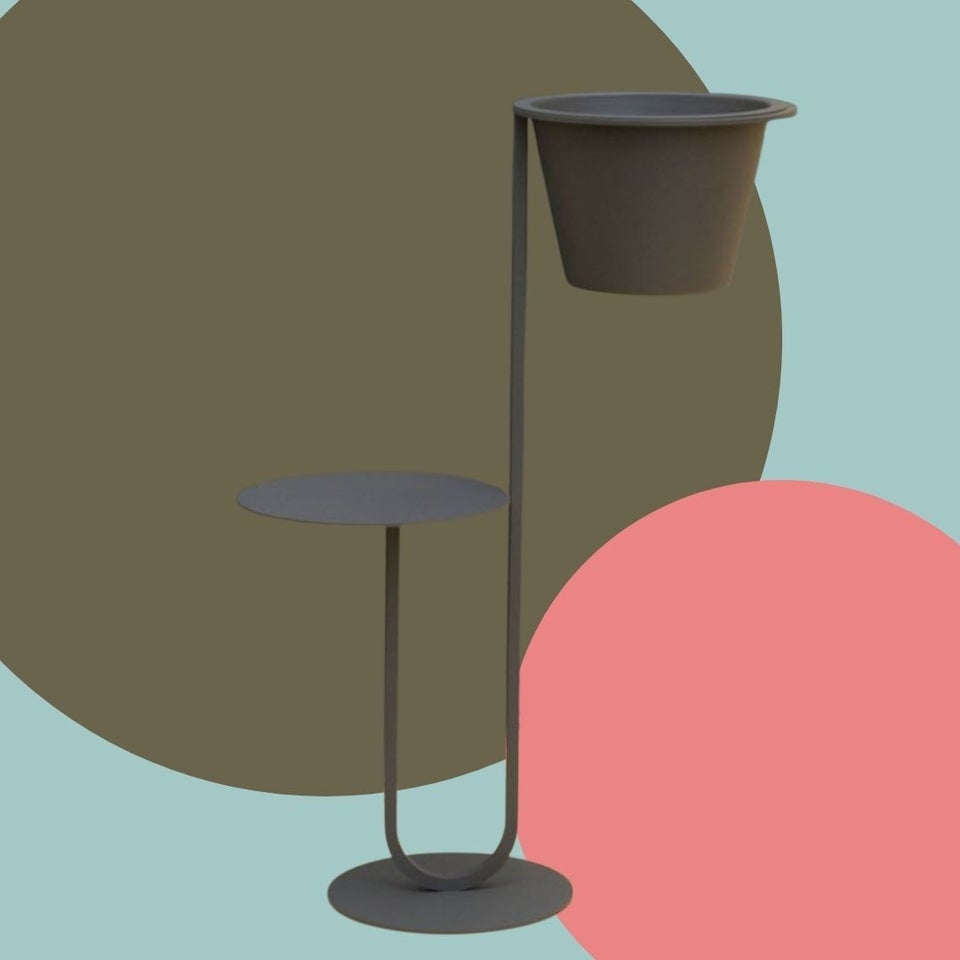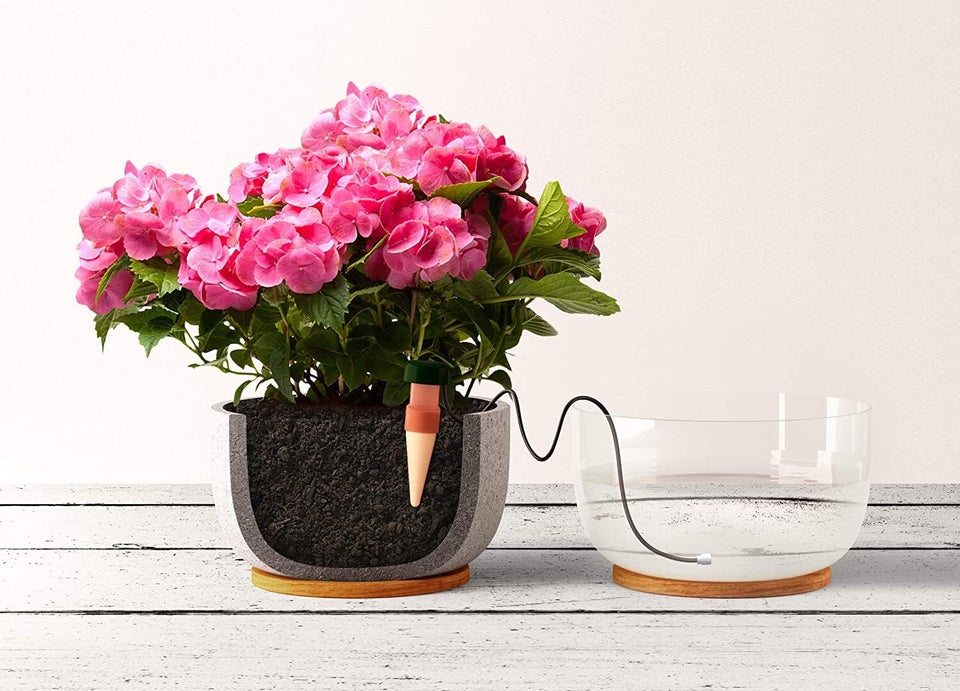Animals are curious creatures. They sniff, paw at and dig their way through life ― and this may be especially true when you add new plants to your home. But instead of panicking each time you see Mr. Whiskers chomping on your kangaroo fern, know there are plenty of ways for both your furry and green family members to coexist in carefree, non-toxic unison.
“Many of us share a living space with a cat or dog—or both! So, it’s essential to keep in mind plant toxicity when picking a houseplant to help keep them safe,” said Erin Marino, a plant expert from The Sill, an indoor plant shop that offers educational workshops.
Marino explained that plant toxicity is something that naturally occurs as part of a plant’s evolutionary defense mechanism.
“Most plants create or secrete what are called secondary plant metabolites to defend themselves. They have been doing this for millions of years! For example, poisonous sap from the popular rubber tree (or Ficus elastica) protects it from many herbivores,” she said.
Some of these secretions can be not just toxic, but deadly to pets. However, Marino said many factors contribute to whether or not a toxic plant is a complete threat to your animal.
“It really depends on the pet and their interest level. And it’s important to note that the plant, or part of the plant, needs to be ingested to affect your pet. Simply being in the same room, perhaps on an out-of-reach shelf, can be totally fine.”
Marino suggests keeping plants out of reach by utilizing ceiling hangers, elevated shelves and plant stands.
However, if you want to be on the complete safe side or if you have a particularly inquisitive pet, Marino said it’s best to steer clear of any bulb plants like daffodils, lilies and hyacinths, as well as the highly popular and beginner-friendly pothos plant.
“Other popular toxic plants include the heartleaf philodendron, ZZ plant and peace lily,” she added.
Marino also noted that just because a plant is non-toxic, doesn’t mean it’s necessarily edible — it just means it won’t make your pet seriously sick if they consume it. Organizations like the American Society for the Prevention of Cruelty to Animals offer great resources to know what kinds of indoor and outdoor plants post a potential threat to your animal and which ones are safer options.
For some of Marino’s favorite non-toxic plants, plus some other pet-friendly picks and suggestions on how to position them, keep reading the list below.
HuffPost may receive a share from purchases made via links on this page. Every item is independently selected by the HuffPost Shopping team. Prices and availability are subject to change.
An easy-to-care-for tropical palm
"The parlor palm thrives in medium to bright indirect light, but can tolerate low indirect light," Marino said. "Unlike the palm trees you see at the beach, this palm is not suited for intense, direct sun. It’ll be happiest in bright indirect sunlight if possible with water every one to two weeks. Fun fact: this plant has been cultivated since the Victorian era. It was (and still is) prized for its resilience to indoor conditions and easy-going nature."
A neon-hued, fuss-free plant native to the forests of Brazil
With striking oval green leaves that boast a chartreuse herringbone pattern, this neon prayer plant gets its name because it actually folds its leaves closed at night, just like hands folded in prayer. This vibrant plant benefits most from lower indirect sunlight and humid conditions, similar to what they would experience on the rainforest floor.
An easy-going houseplant that might occasionally flower
Also known as a baby rubber plant, the Peperomia obtusifolia has thicker, succulent-like leaves and sprouts white floral spikes about once a year. "A popular variety of peperomia, the obtusifolia does not need much to thrive. It can tolerate a wide range of conditions, from bright to low light, but does best in bright to medium indirect light with water every one to two weeks," Marino said.
A Brazilian air plant with a long-lasting bloom
For a fanciful pop of color in your home, this potted air plant known as the Bromeliad aechmea pink is pet-safe and features blush pink flowers that can last up to half a year per bloom. In their native environment, they actually grow on trees and absorb most of their nutrients through their silver dusted foliage. They prefer indirect sunlight and humid environments and need to be kept filled halfway with water through the center cone of the plant, rather than the soil.
A delicate-looking fern that's one of the easiest to care for
"The bird’s nest fern is one of the easiest ferns to care for indoors. It can tolerate bright to low indirect light (does best right in between), with weekly waterings. It can also benefit from a little extra humidity," Marino said. This leafy six-inch fern comes pre-potted in a woven planter.
A self-propagating plant with quirky round leaves
The perennial herb Pilea peperomioides, native to Southern China, sprouts coin-shaped leaves and is fairly easy to care for. Marino said it thrives in bright direct light, and should be watered every one to two weeks, allowing for the soil to dry out completely between waterings.
A unique cactus with trailing ric-rac stems
Best recognized for its zig-zag stems, this succulent is known as the ric-rac cactus. According to Marino, you should err on the side of under-watering, allowing the soil to completely dry out between waterings. "It thrives in bright direct to bright indirect light and should be watered every two weeks," she said.
A whimsical sage-colored air plant
Marino said this silver-green floating plant thrives in bright indirect light and can also benefit from a little extra humidity, so a
humidifier might be useful. "To water, soak it weekly in a bowl of room temperature water for about 15-30 minutes. After soaking, shake off any excess," she added.
A beautiful creamsicle-colored orchid
"Affectionately called the beginner orchid, the popular pet-safe Phalaenopsis orchid is one of the easiest varieties of orchids to grow," Marino said. "It typically blooms about once a year, for up to three months. After a blooming cycle, the flowers will wilt and fall off. This is the orchid’s way to store up energy to rebloom again next season. It thrives in bright indirect sunlight with weekly waterings."
A set of five handmade macrame plant holders
For a particularly tenacious pet that won't leave your houseplants alone, Marino suggested elevating your plants in some way, either with shelves, elevated plant stands or hanging planters. Using 100% cotton cording, these handwoven macrame planters can be dip dyed to add a touch of color or kept natural. They also come in various size and length options to accommodate different ceiling heights and plant pot sizes.
A floating plant saucer for a magical and pet-friendly display
These adjustable hanging saucers offer a minimalist design approach to plant display and can help keep plants away from curious critters. They are made from 80% recycled plastic, are available in five different colors and are both UV-proof and waterproof so you can water your plants directly on them and also hang them in brightly lit spaces.
An elevated plant stand to keep plants away from pets
For a modern multi-level display, this elevated plant stand can be a great option to have in your home. Designed and made at a small business in Los Angeles as part of West Elm's Local initiative, this stand is made from hand-welded steel and comes in five different colors.
